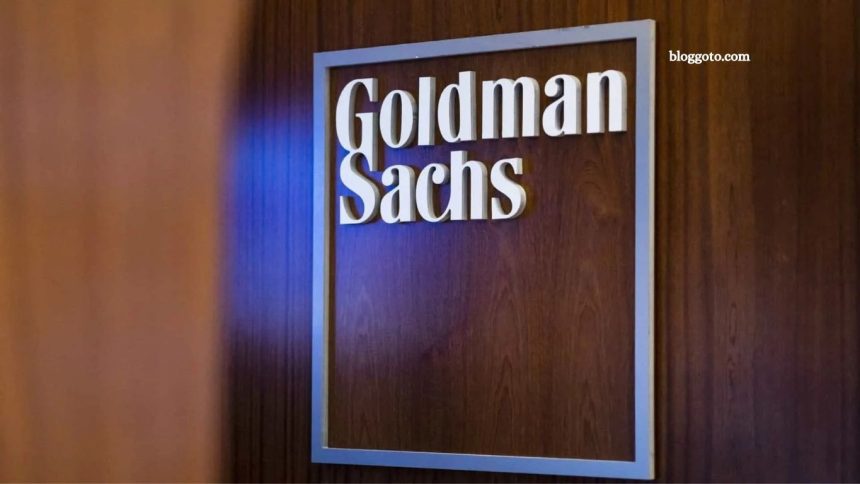Goldman Sachs’ prestigious summer internship program is often described as one of the toughest and most rewarding internships in the financial world. Each year, hundreds of thousands of students from around the globe apply in hopes of earning one of the few coveted spots. With an acceptance rate even lower than Harvard’s, the program has become a benchmark for excellence in early-career finance.
Inside Goldman Sachs’ 10-Week Internship
Goldman Sachs’ 10-week summer analyst program kicked off last week, bringing together students from over 500 schools worldwide. Interns spend the summer working alongside industry leaders, tackling high-impact challenges, and gaining hands-on experience in global finance. According to the company, the internship is designed to accelerate both professional development and personal growth.
Participants are immersed in real client projects, supported by mentorship, and provided with structured training. The firm offers interns exposure to core areas such as investment banking, asset management, engineering, and risk management.
Read More: Wharton MBA ‘a Waste of Time,’ Says Global Bank CEO — Here’s the Degree He Recommends Instead
Acceptance Rates: Tougher Than Ivy League Admissions
In 2025, the summer internship acceptance rate at Goldman Sachs hit a record low of 0.7%, compared to Harvard University’s 3.6% acceptance rate for the same cycle. Out of more than 360,000 global applicants, only 2,600 were selected—a clear indicator of the program’s elite status. This marked the most competitive intern class in the firm’s history.
The selected cohort speaks more than 85 languages and represents top-tier academic institutions from across the globe, reflecting Goldman’s commitment to diversity and inclusion.
Rapid Growth in Applications
Since David Solomon took over as CEO in 2018, interest in the Goldman Sachs summer program has surged. Applications have grown by over 300%, with a 15% year-over-year increase just this past cycle. This explosive growth mirrors a broader trend in competitive finance internships, as students worldwide see these programs as gateways to lucrative careers in banking, private equity, and asset management.
Goldman Sachs vs. JPMorgan: A Battle of Titans
Goldman Sachs isn’t the only firm with astronomical application numbers. JPMorgan Chase, another banking giant, received 493,000 applications last year for only 4,000 internship spots—an acceptance rate of 0.8%. Both firms offer similar intern experiences but differ slightly in focus areas and hiring practices.
This ultra-competitive environment places these internships in the same difficulty tier as some of the most exclusive opportunities in the world—including NASA’s astronaut program, which accepted just 10 out of 12,000 applicants in 2020.
The Rigorous Interview Process
To land an internship at Goldman Sachs, candidates undergo a two-stage interview process:
HireVue Interview – A 30-minute video interview featuring standard behavioral questions such as:
- “Walk me through your resume.”
- “Why Goldman Sachs?”
- “Explain banking like I’m five.”
Superday Interviews – The final round includes a series of live interviews (virtual or in-person) with 2–5 team members, including associates, vice presidents, or partners. Candidates applying for engineering roles also face a technical assessment testing coding and problem-solving skills.
The firm looks for qualities like analytical thinking, curiosity, teamwork, communication skills, and a demonstrated interest in financial markets.
Application Timeline: Start Early
One of the most overlooked aspects of the internship is timing. Applications for Goldman Sachs open more than a year in advance, typically in spring. That means students apply as sophomores, interview as juniors, and intern the summer before their senior year. By the time current interns begin work, the firm is already interviewing candidates for the next cycle.
This early timeline demands proactive career planning and a strong academic foundation from day one of college.
Frequently Asked Questions
How competitive is the Goldman Sachs internship?
Extremely competitive—with a 0.7% acceptance rate, it’s harder to get into than Ivy League schools.
When should I apply for the Goldman Sachs summer internship?
Applications open over a year in advance, typically in spring. Apply during your sophomore year.
What majors does Goldman Sachs prefer?
While finance, economics, and engineering are common, Goldman recruits across various disciplines if candidates demonstrate strong analytical and problem-solving skills.
What is the interview process like?
Two main steps: a HireVue video interview and a Superday with live interviews. Engineering candidates must also complete a coding assessment.
What roles are available for interns?
Interns are placed in divisions like investment banking, asset management, engineering, risk, and compliance.
Is prior finance experihs interns get paid?
Intern compensation varies by location and division but typically ranges from $7,000 to $10,000 per month in the U.S.
Does the internship lead to a full-time job offer?
Yes, many interns receive return offers. Completing the internship is the most common path to a full-time analyst role at Goldman Sachs.
Conclusion
The Goldman Sachs summer internship is more than just a resume booster—it’s a career-defining opportunity. With intense competition, a rigorous interview process, and limited spots, only the best candidates secure a seat. However, for those who make it, the program offers unparalleled exposure to the financial world, a strong professional network, and often, a full-time offer.
For aspiring finance professionals, preparation should start early. From building technical and interpersonal skills to understanding market trends and staying updated on application cycles, every detail counts. With diligence and strategic planning, landing a Goldman Sachs internship—though incredibly tough—is possible.











